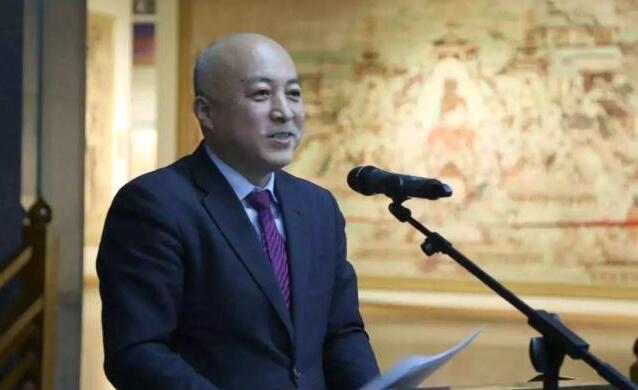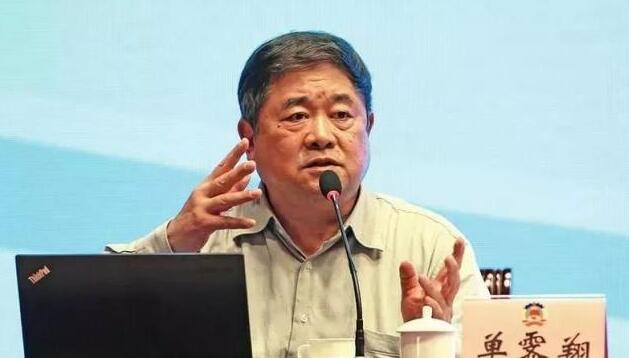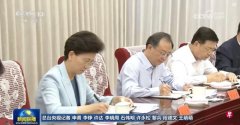Recently, the update information of the leadership column of the website of the Ministry of Culture and Tourism shows that Wang Xudong, who has just served as the president of the Palace Museum, has been a member of the party group of the Ministry of Culture and Tourism, and is clearly the deputy ministerial level.

On March 8th, Shan Xiangxiang, who was in charge of the Palace Museum for 7 years, retired, and was served as Wang Xudong, the former president of the Dunhuang Research Institute and the party secretary of the party committee.
Wang Xudong is a member of the 19th Central Central Committee.According to public information, he was born in Yaman Dan, Gansu in February 1967. He graduated from the Department of Geology and Engineering and Geology at the Department of Geology and Engineering of Lanzhou University. He is also a part -time professor and doctoral supervisor at Lanzhou University.
In 1991, Wang Xudong came to the Dunhuang Research Institute to engage in the protection of murals and soil sites of Mogao Grottoes.
In January 2005, he served as Deputy Dean, his later executive deputy dean, deputy secretary of the party committee, secretary of the party committee, and executive deputy dean. In December 2014, he served as the fourth dean of the Dunhuang Research Institute in December 2014.
In an interview with political affairs, he said that the value of Mogao Grottoes is different from the value of the Forbidden City. The success of the Forbidden City cannot be copied to Dunhuang, but experience can be used for reference.Behind the Mogao Grottoes is more Buddhist culture and is a multiculturalism with different civilizations.To understand the culture and art of Dunhuang, it takes time, patience and cultural accumulation, and it should not be too impatient.
In addition to the adjustment of the dean, in March of this year, Ji Tianbin, the former secretary of the Party Committee of the Palace Museum, stepped down. The new party committee secretary was Duhaijiang., Chairman of Beijing Xingli International Convention and Exhibition Co., Ltd..
Shan Xiangxiang was born in 1954. He is 65 years old. He has served as the director of the Beijing Municipal Bureau of Cultural Relics, Secretary of the Fangshan District Committee, Director of the Beijing Municipal Planning Committee, and director of the State Cultural Relics Bureau.In January 2012, he served as a member of the Party Group of the Ministry of Culture and the president of the Palace Museum. After the reform of the State Council, he served as a member of the party group of the Ministry of Culture and Tourism. Shan Xiangxiang, Dean of the Palace Museum, retirement
On April 8th, Dan Xiang, the dean of the Palace Museum for 7 years, retired today. The successor was Wang Xudong, the former dean of the Dunhuang Research Institute.As a result, Shan Xiangxiang, who was well known to everyone, was well known to the Palace Museum because of the 20 pairs of cloth shoes, traveled to more than 9,000 rooms in the Forbidden City.
So far, Shan Xiangxiang has been the president of the Palace Museum for 7 years.
 Open the Baidu app, see more pictures
Open the Baidu app, see more pictures
Shan Xiangxiang was born in 1954. He graduated from the urban planning and design of the School of Architecture of Tsinghua University.Shan Xiangxiang has served as director of the Beijing Municipal Bureau of Cultural Relics, Secretary of the Fangshan District Committee, Director of the Beijing Municipal Planning Committee, and director of the State Administration of Cultural Heritage.
Ten years after the director of the State Administration of Cultural Heritage, Shan Xiangxiang, who had already retired, took over the Palace Museum.At that time, the Forbidden City had just experienced the crisis of public opinion in the Ten Child and urgently needed to reshape the image.
I am the sixth president of the Forbidden City, and each dean has made great efforts.Shan Xiangxiang once said that because the Forbidden City is too complicated and the safety of safety is crucial. Usually, it is necessary to do one thing. RSquo; we are all lsquo; we are lsquo;
When Shan Xiangxiang took over as the Forbidden City, as the largest ancient palace building complex in the world, only 30%of the open areas for a long time, more than 1.86 million cultural relics collections were sleeping in the warehouse.Visit Gujian along the central axis, and rarely can access colorful cultural relics.
As of 2018, the open area of the Forbidden City from 52%in 2014 reached more than 80%today, and 8%of cultural relics will be exhibited to the public.
Shan Xiangxiang has been in the years, and the Forbidden City has been born in batches.From the cultural relic restoration master Wang Jin, to the cultural and creative, lipstick, and the night of the cultural activities, the Forbidden City has repeatedly set off waves on the Internet.As the insiders of the Forbidden City said, Shan Xiangxiang itself became the largest Internet celebrity in the Forbidden City.
In 2017, the number of visits to the Forbidden City reached 891 million, putting all the information of more than 1.86 million collections on the Internet.In the same year, the sales of cultural and creative products of the Forbidden City reached 1.5 billion yuan.
Shan Xiangxiang has always claimed to be the people of the Forbidden City instead of the head.Now I removed the position of the door, where will Shan Xiangxiang go?Shan Xiangxiang once said that he claimed to be a Palace Museum. He explained nearly 2,000 games in the past 6 years before the Forbidden City, with a time of about 2,000 hours.
After I retired, I wanted to be a volunteer, and I wanted to show mercy when I wanted to interview.Shan Xiangxiang laughed.
Wang Xudong Resume
Wang Xudong, male, Han nationality, was born in February 1967, from Yaman Dan, Gansu, joined the Communist Party of China in April 2003, and joined the work in August 1990.In 2002, he graduated from the School of Geological Engineering of the School of Resources and Environment of Lanzhou University.
In June 1991, he went to work at the Dunhuang Research Institute.
In January 2005, he served as Deputy Dean of the Dunhuang Research Institute.
In May 2011, he was appointed Deputy Dean and Deputy Secretary of the Party Committee of the Dunhuang Research Institute.
In November 2013, he served as Secretary of the Party Committee and Executive Deputy Dean of the Dunhuang Research Institute.
In December 2014, he served as Dean of the Dunhuang Research Institute and secretary of the party committee.Since April 2019, he has served as a member of the party group of the Ministry of Culture and Tourism and the president of the Palace Museum (Deputy Minister).



